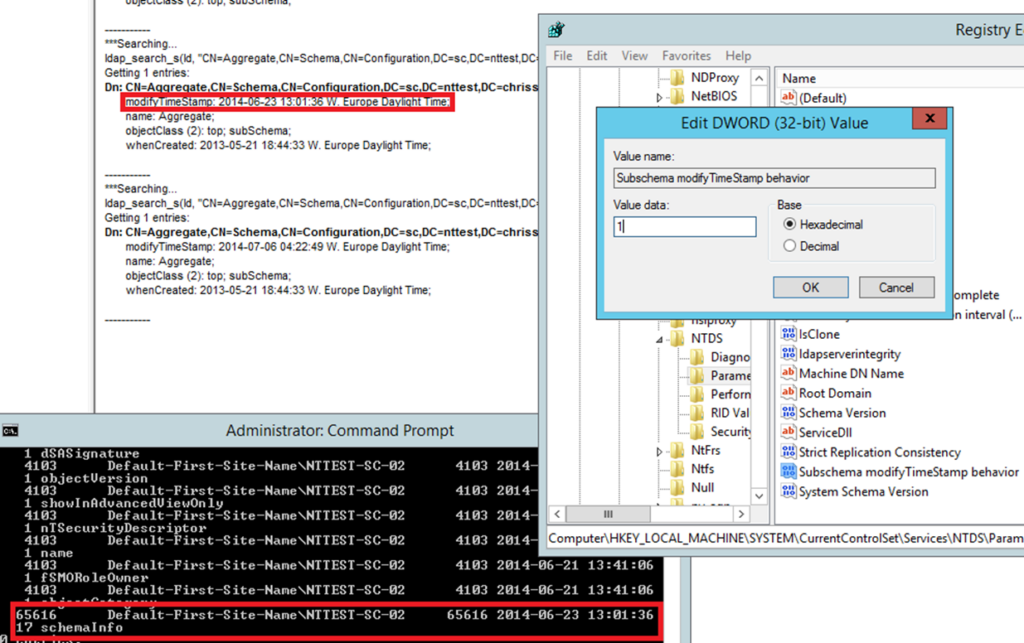For some background information about the constructed attribute ‘modifyTimeStamp’ that is based off the data in the ‘whenChanged’ attribute in most cases except the subschema entry see the following previous blog post: http://blogs.chrisse.se/2013/06/28/the-constructed-attribute-modifytimestamp-always-whenchanged/
I just played along with a Windows Server 2012 R2 DC and noticed a undocumented registry key (this might was added in already in Windows Server 2012) but is not in Windows Server 2008 R2 or earlier releases – The key are:
‘Subschema modifyTimeStamp behavior’ DWORD registry values can be configured within the following key:
HKEY_LOCAL_MACHINE\SYSTEM\CurrentControlSet\services\<INSTANCE>\Parameters.
Note: if the key doesn’t exist or have a value of 0 the default behavior will apply.
But what happens, and what works different if a value of ‘1’ is used?

It seems like we’re getting the time of when the schema actually was updated, and not just when the schemaCache was updated – as the ‘modifyTimeStamp’ attribute will indicate by its default behavior if you request it over the subschema. I compared the time of ‘modifyTimeStamp’ and the metadata for the ‘schemaInfo’ attribute to verify this (more on that attribute another day, if someone want?)
So what can this be used for? I have no idea J One can just read off the schemaInfo instead.
